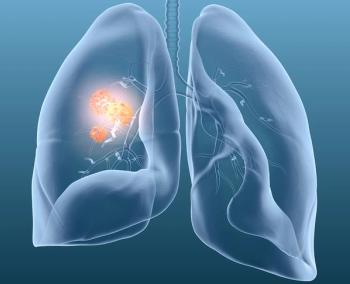
Oncology NEWS International
- Oncology NEWS International Vol 23 No 5
- Volume 23
- Issue 5
Women With HIV at Risk for Undermanagement of Depression
PALM SPRINGS, Calif--Women with HIV represent the fastest growing segment of the epidemic and are among the most vulnerable for the undermanage-ment of both pain and psychological distress, Robert Boland, MD, and Margaret McDonald, CSW, said at the Academy of Psychosomatic Medicine meeting.
PALM SPRINGS, Calif--Women with HIV represent the fastest growingsegment of the epidemic and are among the most vulnerable forthe undermanage-ment of both pain and psychological distress,Robert Boland, MD, and Margaret McDonald, CSW, said at the Academyof Psychosomatic Medicine meeting.
Although large epidemiologic studies have shown that depressionis commonly associated with AIDS, the depressive symptoms of womenwith HIV have not been well studied.
Dr. Boland, of the Miriam Hospital, Providence, RI, reported ona longitudinal study (the HIV Epidemiology Research Study, orHERS, sponsored by the CDC) in which data were gathered on womenat four urban sites (Baltimore, Providence, New York, and Detroit)using the Center for Epidemiologic Studies Depression Scale (CES-D).
In a group of predominately African-American women (261 asymptomaticHIV seropositive women and 234 at-risk seronegative women), depressionscores for both groups were significantly higher than those inthe general population.
Women in both groups reported a dramatic number of psychosocialstressors, Dr. Boland said, including insufficient money to payfor housing, unsafe housing, relationship difficulties, havingbeen attacked or raped, and having their children taken away fromthem.
Increased Stressors the Key
Those women who were HIV seroposi-tive reported greater numbersof psycho-social stressors than did the women who were seronegative.Yet there were no significant differences between the two groupsin depression scores (a mean of 20 for both groups, compared withan average of 8 for the general population).
Further analysis suggested that increases in stressors and IVdrug use were associated with higher depression scores, but HIVstatus did not contribute to depression scores. Additionally,in the seroposi-tive group, neither CD4 count nor length of timesince diagnosis affected depression scores.
At early stages of the infection, depression is not associatedwith HIV status but with the presence of psychosocial stressors,Dr. Boland suggested. "Maybe depression plays a role in acquiringHIV. Possibly the distortions in self-image inherent in depressionmay lead to reduced care in practicing safe sex or other preventivebehaviors," he said, adding that this connection may haveimportant implications for AIDS prevention programs.
Ms. McDonald reported on her study, with William Breitbart, MD,at Memorial Sloan-Kettering Cancer Center, where she is with thePsychiatry Service.
A group of 154 women who met CDC criteria for AIDS were screenedwith the Beck Depression Inventory; 21% of the sample met thecriteria for mild to moderate depression; 31% for moderate tosevere depression; and 27% reported suicidal ideation that wasassociated with the presence of pain, number of AIDS-specificsymptoms, and severity of depressive symptoms.
The severity of depressive symptoms was significantly associatedwith the presence of pain, pain intensity, physical performancestatus, the number of general physical symptoms, and the numberof AIDS-specific symptoms, Ms. McDonald said. Women with impoverishedsocial support systems were more likely to report depressive symptoms.
Ms. McDonald pointed out that these results corresponded withthose reported in studies of gay men with HIV disease: Depressionin women with AIDS is associated with both the number of physicalsymptoms and poor quality of social support.
The study also found that 70% of the sample reported having painfrequently or constantly; 255 women reported experiencing worstpossible pain constantly. Women in this group had an average of2.6 different types of pain. Common sites included legs, head,abdomen, lower back, and pelvis. Women with a history of IV druguse reported worse pain than those without such a history.
Women who reported severe pain were more likely to be undertreatedfor their pain than were men with severe pain. This may be dueto lower socioeconomic status, minority status, or lack of accessto adequate pain management. "Just being a woman may meanthat you receive less medication," Ms. McDonald said.
She noted that since many of the women were caregivers, they mayhave had less time to focus on caring for themselves. Additionally,they may have worried that by having opioids in their home, theymight contribute to a family member's continuing substance abuse.
Articles in this issue
almost 30 years ago
Earlier Unrelated BMT Is Effective in CML Subgroupalmost 30 years ago
Taxol/Cisplatin Extends Survival in Advanced Ovarian Caalmost 30 years ago
Prostate Cancer Patients Face a Host of Psychosocial Issuesalmost 30 years ago
NSABP to Study Docetaxel in Operable Breast Canceralmost 30 years ago
Panel Recommends Approval of Talc for Malignant Pleural Effusionsalmost 30 years ago
ODAC Recommends Approval of Verluma for Staging of SCLCalmost 30 years ago
Minorities Lack Internet Access to Cancer Research Dataalmost 30 years ago
Fludarabine Produces CRs as First-Line CLL Therapyalmost 30 years ago
M.D. Anderson's C. Stratton Hill Receives Award From American Cancer Societyalmost 30 years ago
Managed Care: The View From Salick Managed CareNewsletter
Stay up to date on recent advances in the multidisciplinary approach to cancer.

















































































